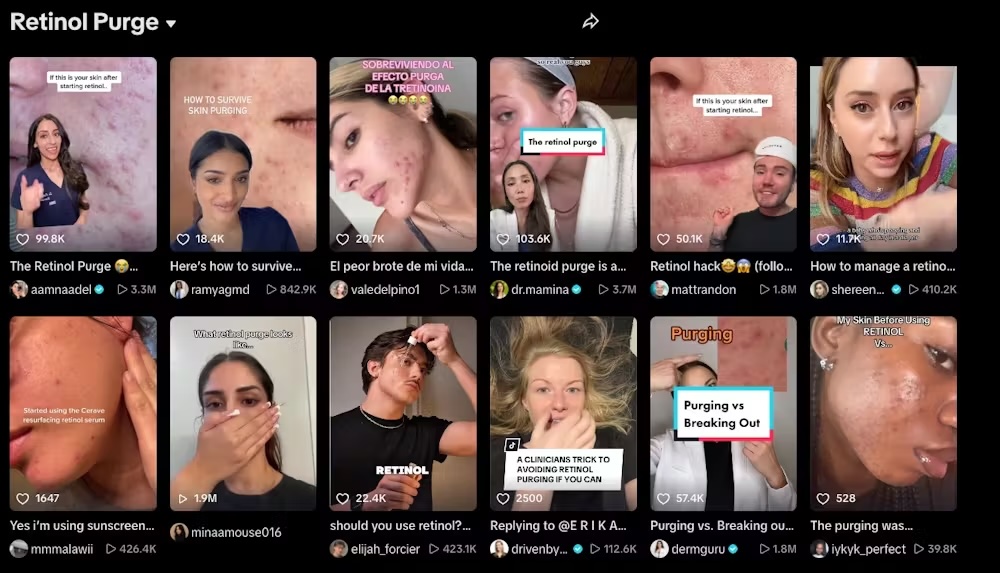Retinol skincare products suddenly seem to be everywhere, promising clear, radiant and "youthful" skin.
But what's the science behind these claims? And are there any risks?
You may have also heard retinol can increase your risk of sunburn and even make acne worse.
For some people, retinol may help reduce the appearance of fine lines. But it won't be suitable for everyone. Here's what you need to know.
Retinol is part of a family of chemical compounds called retinoids. These are derived from or related to Vitamin A, a nutrient essential for healthy skin, vision and immune function.
All retinoids work because enzymes in our skin convert them into their "active" form, retinoic acid.
You can buy retinol in creams and other topical products over the counter.
These are often promoted as "anti-ageing" because retinol can help reduce the appearance of fine lines, wrinkles and even out skin tone (for example, sun spots or acne scars).
It also has an exfoliating effect, meaning it can help unclog pores.
Stronger retinoid treatments that target acne will require a prescription because they contain retinoic acid, which is regulated as a drug in the United States, European Union, United Kingdom and Australia.
One of the most common claims about retinol is that it helps to reduce visible signs of ageing.
How does this work?
With age, the skin's barrier becomes weaker, making it more prone to dryness, injury and irritation.
Retinol can help counteract this natural thinning by stimulating the proliferation of keratinocytes – cells that form the outer skin layer and protect against damage and water loss.
Retinol also stimulates the production of collagen (a key protein that creates a scaffolding that keeps skin firm and elastic) and fibroblasts (cells that produce collagen and support skin structure).
It also increases how fast the skin sheds old cells and replaces them with new ones.
Over time, these processes help reduce fine lines, fade dark spots and even out skin tone. It can also make skin appear clearer.
While effective, this doesn't happen overnight.
You may have also heard about a "retinol purge" – a temporary flare of acne when you first start using topical retinoids.
Studies have found the skin may become irritated and acne temporarily worsen in some cases. But more research needs to be done to understand this link.

At typical skincare concentrations (0.1–0.3%), side effects tend to be mild.
Most people who experience irritation (such as redness, dryness, or peeling) when starting retinol are able to build tolerance over time. This process is often called "retinisation".
However, retinol increases the skin's sensitivity to UV radiation (known as photosensitivity). This heightened reactivity can lead to sunburn, irritation and an increased risk of hyperpigmentation (spots or patches of darker colour).
For this reason, daily use of broad-spectrum sunscreen (SPF30 or higher) is strongly recommended while using retinol products.
Teenagers and children generally don't need retinol unless specifically prescribed by a doctor, for example, for acne treatment.
People with sensitive skin or conditions such as eczema (dry, itchy and inflamed skin) and rosacea (chronic redness and sensitivity) may find retinol too irritating.
Using retinol products alongside other skincare treatments, such as alpha-hydroxy acids, can over-exfoliate your skin and damage it.
Importantly, the active form of retinol, retinoic acid, is teratogenic (meaning it can cause birth defects). Over-the-counter retinol products are also not recommended during pregnancy or breastfeeding.
Since retinol is classified as a cosmetic ingredient, companies are not required to disclose its concentration in their products.
The European Union is expected to introduce new regulations that will cap the concentration of retinol in cosmetic facial products to 0.3%.
These are precautionary measures aimed to limit exposure for vulnerable groups, such as pregnant women, given the risk of birth defects.
It's therefore recommended to use products that clearly state the retinol concentration is between 0.1% and 0.3%.
Retinol is also a notoriously unstable molecule that degrades with exposure to air, light or heat.
Choosing a product with airtight, light-protective packaging will help with potential degradation problems that could lead to inactivity or harm.
The key is to go low and slow: a pea-sized amount of a low-concentration product (0.1%) once or twice a week, preferably at night (to avoid UV exposure), and then the frequency and concentration can be increased (to a maximum of 0.3%) as the skin adjusts.
Using a moisturiser after retinol helps to reduce dryness and irritation.
Wearing sunscreen every day is a must when using retinol to avoid the photosensitivity.
If you experience persistent redness, burning, or peeling, it's better to stop using the product and consult your doctor or a dermatologist for personalised advice.
Laurence Orlando, Senior Lecturer, Product Formulation and Development, Analytical Methods, Monash University; Zanfina Ademi, Professor of Health Economics, Monash University, and Zoe Porter, Lecturer, Pharmacy and Pharmaceutical Science, Monash University
This article is republished from The Conversation under a Creative Commons license. Read the original article.